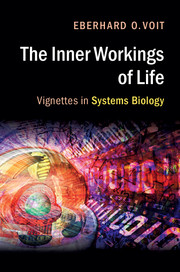Book contents
- Frontmatter
- Contents
- Appetizer
- Acknowledgments
- 1 Status: it's complicated!
- 2 I'd rather be fishin’
- 3 Whizzes and apparitions
- 4 Why?
- 5 Simply engenious!
- 6 Just a little bit
- 7 Supermodels
- 8 Close only counts in horseshoes and hand grenades
- 9 Emergence preparedness
- 10 Life without chaos?
- 11 What hath God wrought!
- 12 Tell me with whom you go and I'll tell you who you are
- 13 Time for a change!
- 14 Can't we all get along?
- 15 Love thyself and fight all others
- 16 A billion dollars for your thoughts!
- 17 The computer will see you now…
- 18 Redesigning perfect
- 19 Let's meet in the agorá!
- 20 Dessert
- Gentle jargon
- Selected further reading
- Index
3 - Whizzes and apparitions
Published online by Cambridge University Press: 05 May 2016
- Frontmatter
- Contents
- Appetizer
- Acknowledgments
- 1 Status: it's complicated!
- 2 I'd rather be fishin’
- 3 Whizzes and apparitions
- 4 Why?
- 5 Simply engenious!
- 6 Just a little bit
- 7 Supermodels
- 8 Close only counts in horseshoes and hand grenades
- 9 Emergence preparedness
- 10 Life without chaos?
- 11 What hath God wrought!
- 12 Tell me with whom you go and I'll tell you who you are
- 13 Time for a change!
- 14 Can't we all get along?
- 15 Love thyself and fight all others
- 16 A billion dollars for your thoughts!
- 17 The computer will see you now…
- 18 Redesigning perfect
- 19 Let's meet in the agorá!
- 20 Dessert
- Gentle jargon
- Selected further reading
- Index
Summary
The rapidly emerging high-throughput data generation of the new world of –omics has radically changed the way we approach many questions in biology. The traditional approach had called for a painstaking, step-by-step process of formulating an hypothesis, testing it with well-designed and well-controlled experiments, analyzing the results for new insights, interpreting these, and posing the next round of hypotheses. In stark contrast, a single –omics experiment generates thousands of data points, and the researcher knows full well that most of them will not advance our current state of knowledge. Yet, there is justifiable hope in finding the proverbial diamond in the rough or maybe at least the needle in the haystack.
Because it has become relatively easy to perform –omics experiments, the amount of biomedical data generated every year has become overwhelmingly huge, leading to the new buzzword of “BigData” which vaguely refers to datasets that are so large and complicated that traditional tools of database management, analysis, and interpretation are no longer workable, at least not with any degree of efficiency. In the case of –omics, the big data experiments often come from interdependent collections of different types of experiment – such as genomics and proteomics, performed on the same system, maybe on different days, and maybe under different conditions or stimuli. The rationale for these combined approaches is the expectation that parallel datasets, elucidating different aspects of the same phenomenon or disease, should be much more informative than datasets of the same type, because they complement each other. For instance, one would expect to see some changes in gene expression reflected in the amounts of various proteins. As a consequence, the combined datasets are huge in size and heterogeneous in nature. For the traditionally trained biologist, this means that “double, double toil and trouble” are brewing in the world of modern biology, leading to ever-louder SOS cries begging computer nerds for help. In many of these situations, the computer whizzes are asked for apparitions: please make patterns appear in the vast expanse of our data!
Computer whizzes actually like this type of challenge, because it allows them to play with bigger and faster machines that can handle numbers of bits and bytes whose prefixes only hard-core scientists have even heard of, such as peta–, exa–, and yotta–.
- Type
- Chapter
- Information
- The Inner Workings of LifeVignettes in Systems Biology, pp. 17 - 25Publisher: Cambridge University PressPrint publication year: 2016



